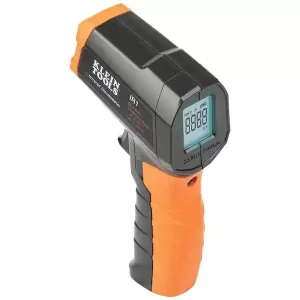
Demystifying Digital Thermometers: Understanding Their Operation
December 05 2023 
Inquiry
Global electronic component supplier AMPHEO PTY LTD: Rich inventory for one-stop shopping. Inquire easily, and receive fast, customized solutions and quotes.
QUICK RFQ
ADD TO RFQ LIST
A digital thermometer is a modern and convenient tool for measuring temperature, replacing the traditional mercury-filled glass thermometers. With multiple benefits over its predecessor, it usually employs electronic components to transform temperature variations into a digital readout shown on a screen.
What is a Digital Thermometer?
A digital thermometer is a modern and convenient tool for measuring temperature, replacing the traditional mercury-filled glass thermometers. With multiple benefits over its predecessor, it usually employs electronic components to transform temperature variations into a digital readout shown on a screen.
When Was Digital Thermometer Invented?
The invention of the first digital thermometer in the late 1950s represented a substantial development in the field of temperature measurement technology. Since then, advancements in technology have led to the development of increasingly precise, portable, and adaptable digital thermometers that are transforming a range of sectors and daily uses.Are Digital Thermometers Accurate?
When used properly, digital thermometers are renowned for their precision. Nonetheless, it's crucial to adhere to the manufacturer's recommendations for accurate calibration and use. Environmental factors and human error are two examples of factors that can compromise the accuracy of digital thermometers. In order to guarantee reliable temperature readings, regular calibration and maintenance are essential.How Does the Digital Thermometer Work?
Electrical resistance is the basis for how digital thermometers work. A type of resistor called a thermistor, whose electrical resistance varies with temperature, is used in the majority of digital thermometers. The internal circuitry of the gadget converts variations in the thermistor's resistance—which occurs as the temperature varies—into a temperature reading. Temperature readings from digital thermometers are accurate and fast thanks to this process.How Digital Thermometer Measures Temperature?
Digital thermometers use electrical resistance changes in thermistors and other temperature-sensitive components to monitor temperature. Next, an easy-to-read measurement of the temperature is shown on the device's digital screen. In order to determine surface temperatures without making direct touch, some digital thermometers additionally employ infrared technology.Video related to How To Use a Digital Thermometer
When Should a Digital Thermometer Be Calibrated?
To keep digital thermometers accurate, calibration is necessary. A digital thermometer should be calibrated on a frequent basis, particularly if it is to be used in critical applications where accurate temperature readings are essential. In addition, the thermometer has to be calibrated if it has been subjected to harsh environments or has experienced physical trauma that could compromise its accuracy.Advantages of Digital Thermometer
- Rapid readings: Unlike glass thermometers, which take several minutes to produce temperature readings, digital thermometers do so in a matter of seconds. This is important when there's a need for prompt assessment, such as when a youngster has a fever.
- High precision: Reliable temperature readings are ensured by the great accuracy of modern digital models, which are frequently within +/- 0.1°F or 0.2°C.
- No mercury: Digital thermometers are safer for homes with kids or pets since they do not contain the hazardous mercury that glass thermometers do. They also do not break easily or expose users to hazardous materials.
- Easy to read: No need to decipher lines on a glass tube because digital displays give crisp, clear readings even in dimly lit areas.
- Multiple uses: A lot of digital models come with multiple modes for measuring temperature, including oral, rectal, armpit, and even forehead. Some of them are multipurpose instruments that can measure the temperature of food and liquids.
- Memory function: Some models have the ability to save previous readings, which makes it possible to monitor temperature variations over time and spot personal tendencies or fevers.
- Fever alarms: Some versions have built-in alarms that ring when a fever is detected, giving you time to take the appropriate action.
- Automatic shut-off: This function improves user-friendliness by preventing needless readings and preserving battery life.
Where Digital Thermometer Is Used?
Digital thermometers have become ubiquitous, finding their way into various applications:- Medical field: Digital thermometers are essential medical instruments that are used for everything from checking body temperature for fevers to making sure vaccinations are stored safely.
- Food industry: Accurate temperature management is necessary to guarantee food safety. Digital thermometers aid in regulatory compliance and the prevention of foodborne illnesses for cooks and food processors.
- Science labs: Researchers depend on digital thermometers for precise and dependable temperature readings for everything from sensitive chemistry experiments to calibrating high-tech equipment.
- Home environment: Digital thermometers are helpful in keeping our environments safe and comfortable, whether you're using them to check the temperature of your baby's bottle or to keep an eye on the thermostat.
Does Digital Thermometer Have Mercury?
In contrast to conventional mercury thermometers, digital thermometers are mercury-free. Because mercury is a harmful material, this makes them safer for both consumers and the environment. Digital thermometers with no mercury mean that there is no chance of exposure to potentially harmful materials, and when their time comes to dispose of them, it will be easier.Which Digital Thermometer Is Best?
The ideal digital thermometer will vary depending on the user's needs and the particular application. When selecting a digital thermometer, factors including accuracy, response time, temperature range, durability, and extra features like data logging and communication should be taken into account. Clinical-grade digital thermometers with excellent accuracy and quick reaction times are recommended for usage in medical settings. Waterproof and instant-read digital thermometers are common options in kitchen environments.Conclusion
Temperature measuring has undergone a revolution thanks to digital thermometers' accuracy, speed, and user-friendly design. To fully reap the benefits of digital thermometers, one must have a thorough understanding of their operation, accuracy, applications, and maintenance needs. Digital thermometers continue to be essential for precise temperature monitoring and management, whether they are utilized in industrial processes, hospital settings, or culinary arts applications. Accepting the advances in digital thermometer technology gives people the ability to measure temperature accurately in a variety of situations and make well-informed decisions. What is a Digital ThermometerWhen Was Digital Thermometer InventedAre Digital Thermometers AccurateHow Does the Digital Thermometer WorkHow Digital Thermometer Measures TemperatureVideo related to How To Use a Digital ThermometerWhen Should a Digital Thermometer Be CalibratedAdvantages of Digital ThermometerWhere Digital Thermometer Is UsedDoes Digital Thermometer Have MercuryWhich Digital Thermometer Is BestConclusion
Related Articles
- ·Stratix 10 VS Stratix V: Which FPGA is Right for Your Next Project?
- ·Intel Xeon Platinum 8454H vs AMD EPYC: Which Reigns Supreme?
- ·A Deep Dive into the AMD EPYC 4564P Processor
- ·MSP430F5438A vs MSP430F5529: A Detailed Analysis of Their Capabilities
- ·Comparing MSP430F6659 and MSP430F5419A: Which One is Right for Your Project?
- ·Exploring the Features of MSP430F5529 and MSP430F5638 Microcontrollers
- ·Demystifying 20 Microcontroller Projects for Beginners
- ·Unveiling the Ultimate Guide to Microcontroller Programming
- ·4680 Battery: Unveiling the Power Potential of the Next-Gen Cell
- ·Exploring the Case Studies on Arduino Applications
Populer Posts
